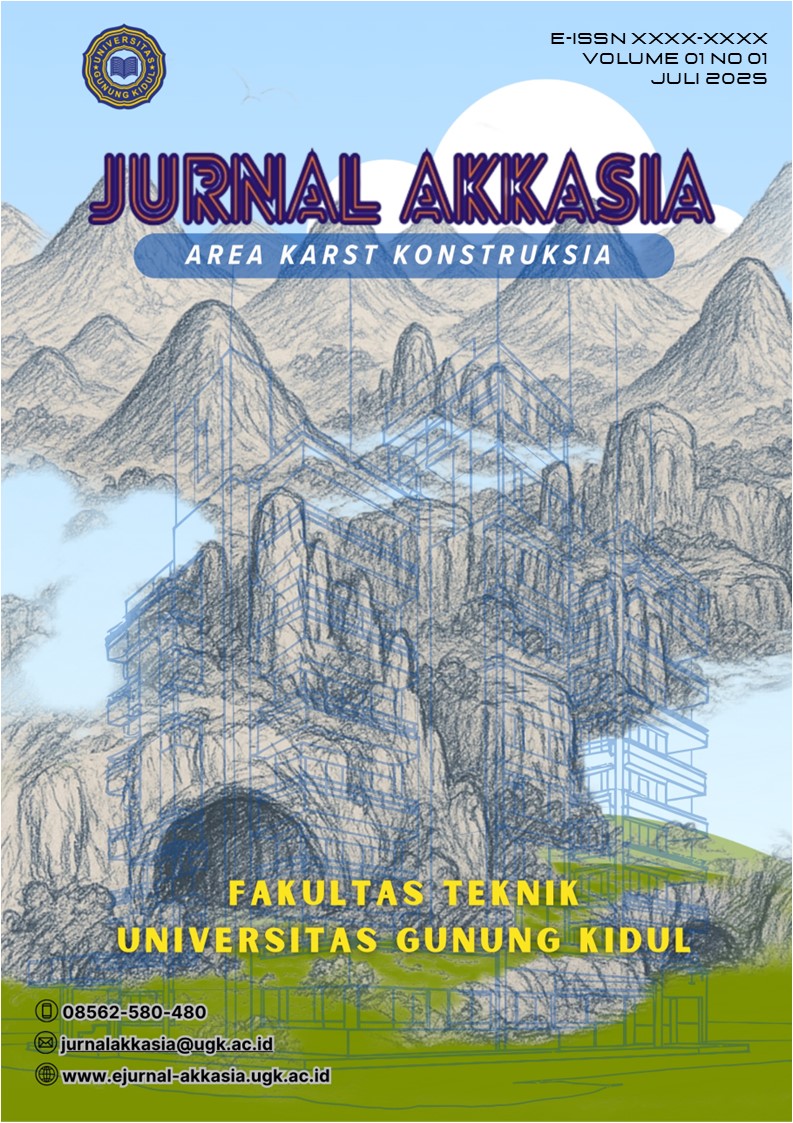Produktivitas Tenaga Kerja pada Industri Konstruksi di Indonesia dengan Penguasaan Intelligent Construction Project
Keywords:
Building Information Modelling, CAD, Desain Teknis, Insinyur Teknik Sipil, Produktivitas Proyek Konstruksi.Abstract
Teknologi Building Information Modeling (BIM) telah menjadi alat penting dalam perencanaan dan pelaksanaan proyek konstruksi. Teknologi aplikasi digital, sebagai salah satu perangkat lunak CAD, mendukung penerapan BIM dengan menyediakan fitur-fitur desain 2D dan 3D yang akurat. Penelitian ini bertujuan meningkatkan kemampuan insinyur Teknik Sipil dalam menggambar dan mendesain proyek berbasis BIM. Metode penelitian merupakan studi literatur. Hasil penelitian menunjukkan bahwa penggunaan aplikasi teknologi digital mempermudah proses desain, meningkatkan efisiensi waktu, dan mengurangi kesalahan dalam pengolahan data. Integrasi dengan perangkat lunak lain, juga meningkatkan fleksibilitas dan fungsi dalam desain proyek. BIM menjadi alat yang signifikan dalam pendidikan teknik untuk membangun kompetensi SDM dalam menghadapi kebutuhan industri konstruksi modern.
References
Aditiaman, N.M, Latief, R.U., Rahim, I.R., Arifudin, R. (2022). Productivity Model of Labour on Construction Projects in Indonesia.International Journal of Engineering Trends and Technology.
Arifin, A. S. (2022). Human Capital Investement: Meningkatkan Daya Saing Global Melalui Investasi Pendidikan. Jurnal Education and development Institut Pendidikan Tapanuli Selatan.
Arvikar. S., et al. (2025). Augmented Reality-based construction site management using optimized BIM and project schedule integration. Automation in Construction.
Assaf, M., et al. (2025). Blockchain-enabled cash flow management system in offsite construction projects. Results in Engineering.
Becker, G. (1975). Human capital : a theoretical and empirical analysis, with special reference to education. Columbia University Press.
Becker, G. S. Gary S. (1993). Human capital : a theoretical and empirical analysis, with special reference to education. The University of Chicago Press.
Chen, L et al. (2024) Conversion of waste into sustainable construction materials: A review of recent developments and prospects. Materials Today Sustainability.
Creswell, J.W., Creswell, J.D. (2018). Research Design Qualitative, Quantitative, and Mixed Methods Approaches. SAGE Publications, Inc.
Dettmer, W. H. (1997). Goldratt’s Theory of Constraints A System Approach to Continuous Improvement. ASQ Quality Press: Wisconsin.
Dou, Y., et al. (2025). Quality and safety management framework for intelligent construction: Cases study in China. KSCE Journal of Civil Engineering.
Durdyev, S., & Mbachu, J. (2011). On-site labour productivity of New Zealand construction industry: Key constraints and improvement measures. Australasian Journal of Construction Economics and Building.
Elmousalami, H, et al. (2025). AI in automated sustainable construction engineering management. Automation in Construction.
Hermawan, et al. (2017). The Sustainable Infrastructure Through the Construction Supply Chain Carbon Footprint Approach. Sustainable Civil Engineering Structure and Construction Material.
Huynh, N. M., Le-Hoai, L., Do, C.D. (2025). Assessing and Improving Labor Productivity Management in Construction: A Practical Framework and Measurement Tool. Construction Economics and Building.
ILO. (2019). Guide: Developing the construction industry for employment-intensive infrastructure investments.
Jayawardana, J. et al. (2025). Sustainable Drivers and Sustainable Development Goals_Based Indicator System for Prefabricated Construction Adoption-A Case of Development Economies. Sustainable Development.
Latief, R.U., Anditiaman, N.M., Rahim, I.R., Arifudin, R., Tumpu, M. (2023). Labor Productivity Study in Construction Projects Viewed from Influence Factors. Civil Engineering Journal.
Linhard, S.M., Sadeghi, S., Soltanmohammadlou, N., Wyke, S. (2025). A LITERATURE REVIEW OF COMMON FACTORS AFFECTING LABOR PRODUCTIVITY IN ASIA: 25 YEARS OF INSIGHT.
Martina, A., Lupasteanu, R., Soemardi, B. W. (2016). Analyses Implementation ISO 9001 Quality Management System in Indonesian and Romanian Construction Company. World Applied Sciences Journal.
McKensey. (2021). McKinsey Global Surveys, 2021: A year in review.
Ojo, LD. et al. (2024). Understanding the fundamental barriers to environmental management system implementation in developing countries. Sustainable Development.
Pribadi, K. S. et. (2022). Construction in Indonesia: Looking Back and Moving Forward. Taylor and Francis.
Sev, Ayşin. (2009). How Can the Construction Industry Contribute to Sustainable Development? A Conceptual Framework. Sustainable Development.
Soekiman, A., Pribadi, K. S., Soemardi, B. W., Wirahadikusumah, R.D. (2011). Factors Relating to Labor Productivity Affecting the Project Schedule Performance in Indonesia. Procedia Engineering.
Soemardi, B. W., Pribadi, K.S. (2018). THE CONSTRUCTION SECTOR OF INDONESIA. 23rd Conference in Malaysia, 2018. AsiaConstruct Conference.
Susilawati, F., Prawenti, H., Puspitasari, E. (2021) HUMAN RESOURCE MANAGEMENT PATTERNS IN INDONESIA’S CONSTRUCTION COMPANIES. Journal of Applied Engineering Science.
Tian, K., et al. (2025). Artificial intelligence in risk management within the realm of construction projects: A bibliometric analysis and systematic literature review. Journal of Innovation & Knowledge
Waty, M., Sulistio, H. (2024). Impact of Change Orders on Decreasing Labor Productivity in Road Construction Projects (Approach using Structural Equation Modeling). Management and Production Engineering Review.
Yang, Liu. (2025). Digital management method of municipal infrastructure engineering construction. Proceedings of the Institution of Civil Engineers - Smart Infrastructure and Construction.






